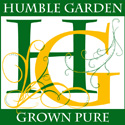
If you have ever delved into the homesteading “how to” book world, you will find that the best of this genre is able to expose you to enough information so that you have a sense for how to go deeper into any one subject. This is because homesteading can encompass a broad spectrum of skills that each require some good amount of book reading and a whole lot of practical experience.
Today I have an opportunity to review one such book, The Backyard Homestead
Carleen was born into a self sufficiency oriented family and had the opportunity to grow up eating homegrown foods. She lives this way now and brings a comfortable even keeled passion to the subject in this book.
The book has a beautiful cover, graced by some neo-primitive design that welcomes you in. The book is information dense but not difficult to read and you can quickly glean what you were after when you opened it. The illustrations are a perfect fit, filled with little details but all relevant and simple. As an artist, I tend to focus on these sorts of things and I find these pen and ink vignettes a perfect pairing with the text.
One of the premises of the book, expressed on the front cover, is that you can “produce all the food you need on a 1/4 acre”. Obviously, this completely depends on what zone you live in and what sort of diet you eat.
The back cover says that on that 1/4 acre you can yield:
- 1,400 eggs
- 50 pounds of wheat
- 60 pounds of fruit
- 2,000 pounds of vegetables
- 280 pounds of pork
- and 75 pounds of nuts
I am not sure if thats all in a 1/4 acre or what you would get if you grew just the one thing. I like this estimation because it helps people be hopeful that there is a whole lot of possibility. Small farmers with diverse holdings are shown to have a higher productive output than huge monoculture factory vegetable farms.
If you are a novice homesteader or even intermediate – you might want to moderate your goals and start out with one or two sorts of food production, master those, then slowly add the next food. For example, start with a garden and some hens. Learn the vagaries of your microenvironment and the needs of your hens, what it takes to feed them and care for them. Learn if you can get away with hens in your setting. When you feel comfortable with the dynamics of these systems you can start adding more food to your back yard!
Before I go into deeper specifics I would like to say that I recommend this book very much. It has an uncomplicated, straightforward way of sharing an abundance of information that can help you understand homesteading and also to get started!
Chapters
- Start your own Backyard Homestead
- The Home Vegetable Garden
- Backyard Fruits & Nuts
- Easy, Fragrant Herbs
- Homegrown Grains
- Poultry for Eggs and Meat
- Meat and Dairy
- Food from the Wild
These are very broad chapter headings! Let me give you a sampling of the topics covered under each.
Start your own Backyard Homestead
- Homestead production plan on 1/10th acre and projected output
- 1/4 acre
- 1/2 acre
The Home Vegetable Garden
- Vegetable garden planning
- Rotation concepts
- Raised beds
- Succession planting
- How a garden develops through the seasons
- Container gardening
- Season extension
- Seed starting
- Vertical growing
- Harvesting and storing seeds
- Overview of vegetables
- Vegetable harvest, freezing, canning, fermenting, and drying
Backyard Fruits & Nuts
- Strawberries
- Raspberries and Blackberries
- Blueberries
- Grapes
- Wine making
- Growing fruit trees
- Edible landscaping
- Fruit drying
- Country wine making
- Cidermaking
- Vinegars
- Growing nut trees
Easy, Fragrant Herbs
- Growing herbs
- Preserving herbs
- 32 Essential herbs
- Herbal vinegars
- Herbal teas
Homegrown Grains
- Which grains to grow and how to
- Corn
- Wheat
- Wheat harvest and grinding, storage
- Cooking with grains
- Bread making
- Beer making
Poultry for Eggs and Meat
- Breed selection
- Chicken lifecycle
- Egg production
- Butchering
- Housing construction
- Turkeys
- Ducks & Geese
Meat and Dairy
- Goats
- How to milk a goat
- Sheep
- Cows: milking and butchery
- Pigs
- Rabbits
- Basic butchery and meat preservation considerations
- Sausage making
- Smoking
- Jerky making
- Cheese making
- Yogurt making
- Butter and Ice Cream making
Food from the wild
- Beekeeping
- Foraging
- Maple sugaring
I have really enjoyed this book. I curl up with it sometimes, in the morning while drinking coffee before the day gets started, and just open to random pages and learn something new.
I can attest that backyard homesteading is enormously satisfying. As I write this, I look out at our green vegetable garden, watch our chickens do their morning thing and smile as I see the goat kids racing around in their enclosure, the does sunning themselves in the morning cool and the llama walking around, taking a break from being a climbing platform for the goat kids who like to jump on her fluffy back and launch into the air (she is SO patient).
With this backyard homestead, it feels like my family has become quite extended to this outside world. We love our animals, the goats are super precious beings and the chickens are always interesting. More importantly, we eat organic fresh picked vegetables, we eat homegrown eggs from chickens fed a wide diet that includes greens from the garden and flax seeds for omega 3s, and raw milk and cheese from our own goats.
With this homestead, I feel very grounded and safe as I know that much of our food is extremely wholesome and pure.
I hope that you too can find even a small measure of this feeling as you garden and homestead.
Product Details
- Title: The Backyard Homestead
- Paperback: 368 pages
- Publisher: Storey Publishing, LLC (February 11, 2009)
- Language: English
- ISBN-10: 1603421386
- ISBN-13: 978-1603421386
- Product Dimensions: 8.9 x 7 x 1.1 inches
- Shipping Weight: 1.6 pounds
















This book sounds very helpful for anyone interesting in turning their garden into an edible landscape. We don’t have livestock, but our vegetable and herb garden produce quite a bit. We added fruit trees and bushes this year after ripping out inedible bushes and can’t wait to enjoy the fruits in a few years.
Sounds like an excellent move! I wanted to plant blueberry bushes when we first moved here (13 years ago) but never did – oh the berries we could have had! I have since realized that we are surrounded by wild blueberries. They are tiny and low to the ground so its not a high productivity thing so I think I need to find a way to grow some of the bigger kinds soon. I can make these monster blueberry smoothies (with kale) that burst with delicious resvesterol, but not at the prices of berries at the store these days!!
Sounds like an interesting book. I was really happy to see that you qualified the “you can produce as much as you can eat” bit by clarifying that zone and diet count in your review, but it seems like she’s covered a lot of bases in the volume. And I really like the cheerful illustration on the cover!
Pamela: Indeed. I saw how you tweeted that you ate some big girl tomatoes from your garden yesterday – my tomatoes are barely 6 inches high and we had to cover last night because we got down to 28 degrees.
There is a HUGE difference of what you can do in terms of output depending on zone. I remember in Alaska that the gardens grew enormous cabbages – thats because of the LONG days! That illustrates how important it is to pick the right cultivars of plants for your region too.
I wont trade for TX heat tho! Did it for decades, am done!
Nika,
I appreciate your balanced review. I purchased this book last week but haven’t read it yet. I purchased about 6 books last week and I’m not on that one yet! I am looking forward to learning from it. On the horizon for us is gardening and chickens, once our fencing is done. We already have goats but need to give them some boundaries. 😉
~Wardeh
Wardeh,
Let me know what you thought of it too. Homesteading should start with good fences! Especially with the goats. We have 18 now, fencing is mandatory!
Oooh, this book sounds like a great way to help plan a dream. Thank you for the honest review, I’m off to add it to my Amazon wishlist.
Thank you for the honest review, I’m off to add it to my Amazon wishlist.
Erika: Excellent! Let me know if you like it.
Carleen Madigan is one of my favorite people. I am so glad to see the positive review. Your garden photos are such an inspiration to me. I am definately doing more season extenders nest year. We are close ijn terms of geography but miles apart in zone. My beans are 3 inches and my tomatoes are maybe 10 inches tall.
Kathy: Do you mean that you think you all are cooler than we are? We live up at 1100 feet and get snow and ice when the bottom of the hill (Brimfield) is still dry and unfrozen. They also get leaves before we do! We are constantly fighting the cold!
I definitely recommend this book, thumbs up from me! Storey puts out great stuff all around.
Storey puts out great stuff all around.
Your welcome to visit the garden if you wanna see how it looks in person. Just dont mind the chaos – have young kids!
We are a lot cooler-just not in a good way. We live in a river valley and get frost when no one else does. I would love to visit. I just know that every time I plan something there is some big thing that needs doing. I am turning into a dreadful homebody. We have been invited to a family reunion for the first of July and I hate to leave the peas.
Yikes, yeah, that will do it! I totally know about the homebody business, am exactly the same way!
I bought this book three days ago and already finished it. It is an awsome book. I highly recomend it. I have only been gardening for two years and still have a LOT to learn, but this book has a ton of information. I was getting so excited while reading it, you know how you felt when you planted your first garden and watching it grow, yeah it was like that again.